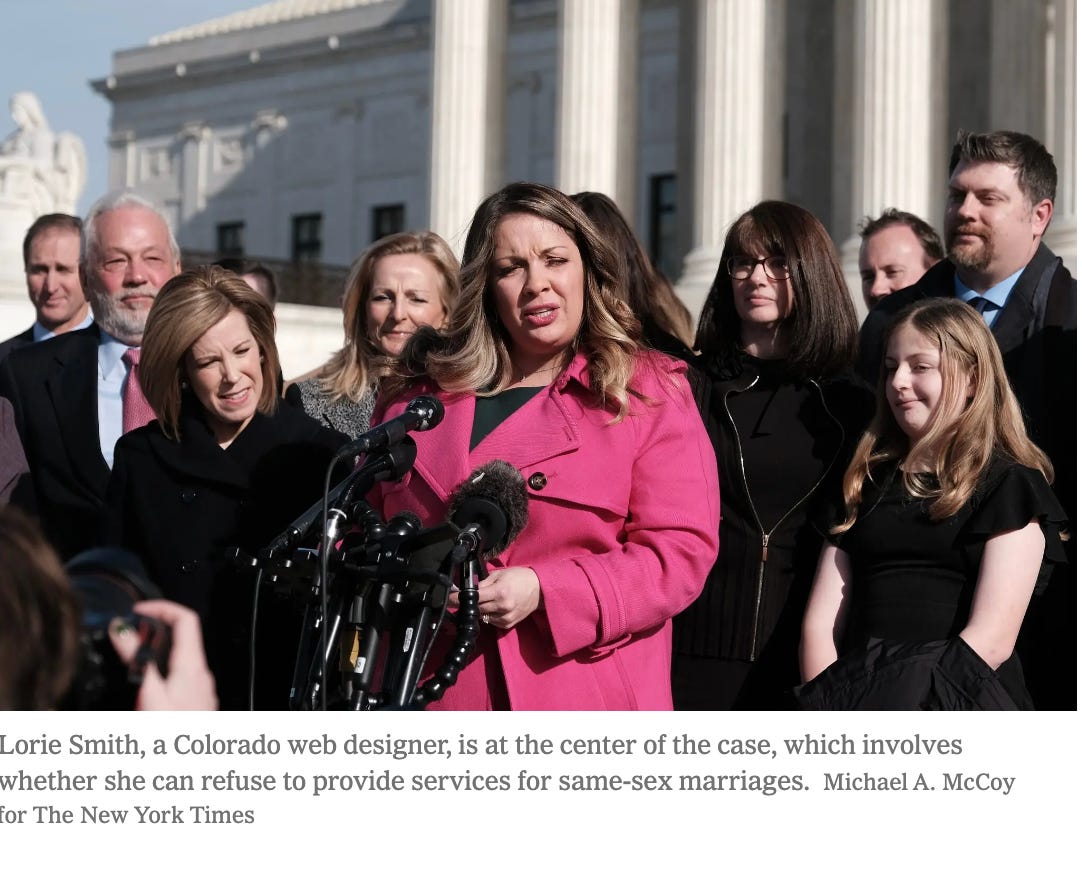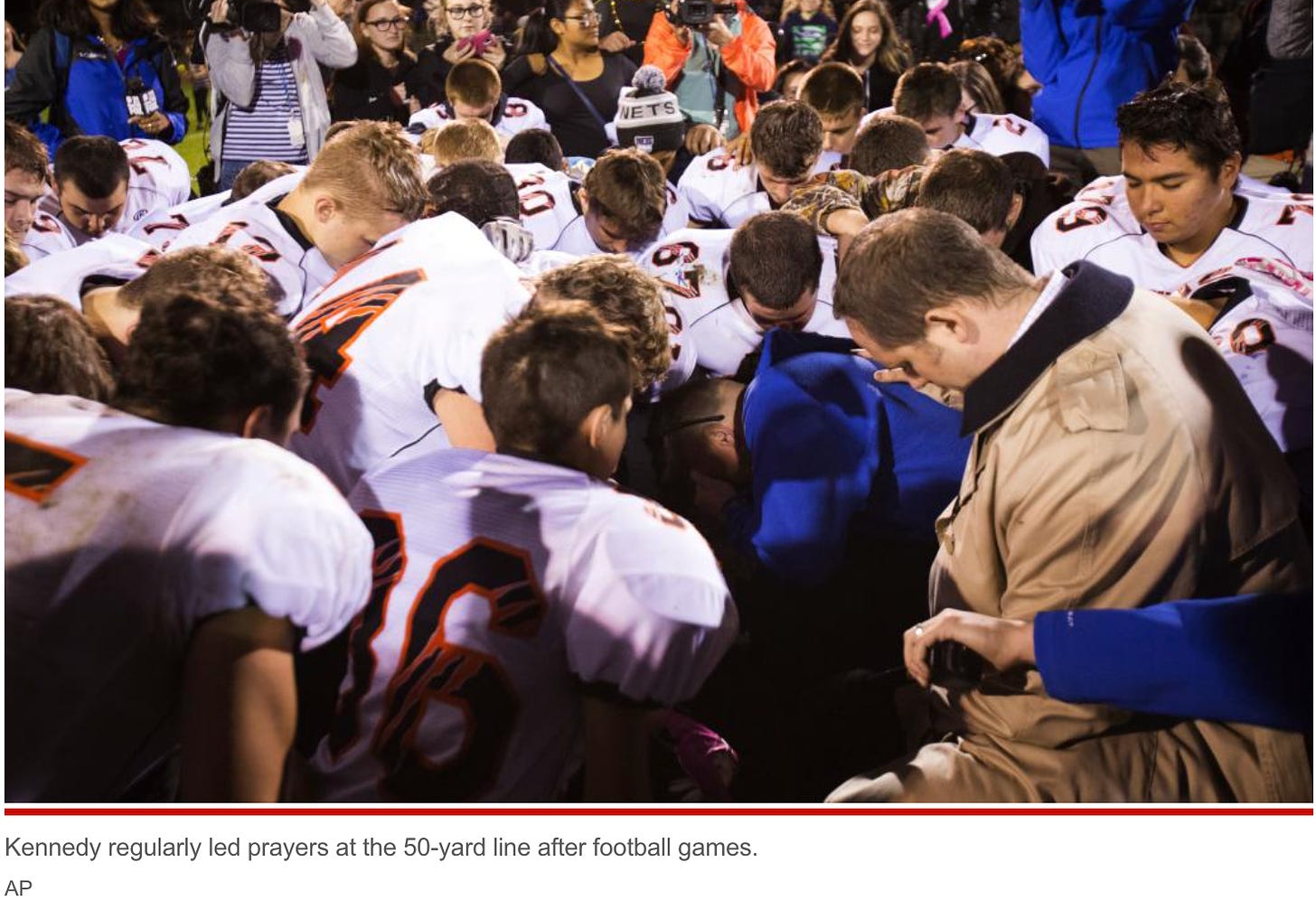What does student loan debt forgiveness and a Colorado law banning discrimination have in common? The obvious answer is that the Supreme Court blocked both efforts, on the same day. What is more striking is the degree of judicial pretzeling the court needed to do to arrive at the desired decisions. In both cases the conservative majority decided that imagined harms were more important than actual harms. Both cases, to a striking degree, relied on legal fictions, even as the decisions will have very real consequences.
If you have not been paying close attention to the cases, maybe this was unclear. But look at the details, and it becomes striking how much the conservative majorities had to engage in make-believe to get the result they wanted.
Lets look at each in turn.
Student loan forgiveness: “Are we the bad guys?”
People can reasonably disagree about the virtue of the student loan forgiveness policy (here is a good version of the case against it and in support of the SCOTUS decision from Ilya Somin). I was more interested in this topic because I was a fan of how well the Biden administration had designed the service delivery, which was a model of using technology to reduce administrative burdens. The legal strategy of the Biden administration rested on the premise that since no-one would be harmed by the policy, no-one could establish standing to sue to block its implementation. This seemed like a pretty good bet for a while. But as soon as SCOTUS took the case, it was clear that the conservative majority would stretch dubious claims of standing to arrive at the desired outcome.
The nonprofit student loan servicing company at the center of the case, MOHELA (Missouri Higher Education Loan Authority), stated publicly that they did not want to be involved. Emails from confused employees asked “are we the bad guys?” But the Supreme Court declared that the state of Missouri had standing because MOHELA was created by the state, even though it is a separate legal entity.
Justice Kagan’s dissent laid bare their degree of hypocrisy involved in the case: “Is there a person in America who thinks Missouri is here because it is worried about MOHELA’s loss of loan-servicing fees?”
But the Court pretended to believe Missouri’s feigned concern for an entity that did not itself claim any injury.
And how bad was the injury to MOHELA? Not that bad, as it turns out. An analysis by Eleni Schirmer and Louise Seamster suggested that the central claims about the scale of the harms was erroneous. Plaintiffs claimed that MOHELA would have lost 40% of revenue from servicing loans. Schirmer and Seamster found that, in fact, the company was set to have a banner year in terms of fees, earning almost $100 million, an increase on its previous year. Despite a poor record, the company continued to win contracts from the government that SCOTUS declared was harming them. As Schirmer and Seamster explained: “Should the justices affirm this claim, they would effectively be confirming a fake plaintiff, false facts and an unjust claim.” That is exactly what SCOTUS did.
The court’s invocation of the “major questions” doctrine in the case adds insult to injury, since it smacks of ex post rationalization where the court and the court alone can tell the rest of the world what a major question is, handing itself a grand new power to wade in to a policy domain when it chooses to. As my Georgetown colleague Josh Chafetz recently wrote about the major questions doctrine:
To use an analogy: If a majority of justices determine that eating an ice cream cone is a major question, then it is not enough that Congress has empowered the agency to “eat any dessert it chooses.” It must legislate that the agency can “eat any dessert it chooses, including ice cream cones.” But Congress has no way of knowing whether eating an ice cream cone is major until it sees what a majority of justices have to say about it….Moreover, as the legal scholar Beau Baumann has noted, Justice Neil Gorsuch and his colleagues have justified the doctrine on the grounds that Congress is too eager to delegate to agencies in order to avoid political responsibility, so the courts must keep Congress in line. In other words, the justices are paternalistically claiming to protect Congress from itself.
The real harms of a fictional wedding web designer
The second decision is, amazingly, built on even flimsier grounds.
Here the court struck down a Colorado law that sought to prevent discrimination of LGBTQ people, ruling that a wedding web designer could not be forced to serve gay couples because of her religious beliefs.
This, somehow, is a free speech issue, even though the case centered on conduct (refusal to serve), not speech. Publicly stating that you want to discriminate against certain groups (as the plaintiff wished to do in advertising her services) is speech, but it is the discrimination itself that Colorado sought to make illegal, and which SCOTUS struck down as a first amendment violation.
Set that aside. The plaintiff, Lorie Smith, was playing a wedding web designer for the purposes of the case. She is a web designer, and claimed she was restricted in her ability to market her services for weddings because of her inability to discriminate according to her Christian conscience. But:
prior to filing the case, she had never designed a wedding website;
she suffered no legal penalty; the state of Colorado never sought her out or punished her;
it seems like no gay couple sought to hire her.
In court filings Smith included the name and address of the gay man who she said had reached out to her to secure her services. But when a reporter contacted that man he indicated that:
a) he is not gay, but a married straight man with no gay wedding plans
b) had never contacted Smith
c) was himself a web designer who had little need for the services that he purportedly sought.
The first time the man in question had heard of the case, he said, was when the reporter contacted him:
“I wouldn’t want anybody to … make me a wedding website?” he continued, sounding a bit puzzled but good-natured about the whole thing. “I’m married, I have a child—I’m not really sure where that came from? But somebody’s using false information in a Supreme Court filing document.”
In another interview he said:
It is concerning that nobody connected with this case over the last six years has ever thought to call me, email me, text me to try and corroborate that communication in any way…I don’t necessarily think that would be a tipping point in this case at all, but at the very least…a case of this magnitude should be corroborated, should be fact checked along the way.
Call me a stickler for facts here, but if I was going to knock down anti-discrimination laws, I would like it to be based on a real conflict, and not something that the plaintiff appeared to make up. I would like to know if the plaintiff had simply found details about a random guy who happened to live in San Francisco, and used him to represent the risks she would face of being contacted by actual gay men.
Narratives center on people. By not including actual gay people, the plaintiff and SCOTUS majority colluded to center the narrative around her imaginary travails, which in turn, centered the case around their preferred issue of free speech, which people largely support, rather than the discrimination, which people generally oppose. Gay Americans were used as silent legal props solely to erase their rights.
What judicial self-aggrandizement looks like
In one case SCOTUS accuses the executive branch of overreach when it itself has bent over backwards to find a way to get around the basic legal issue of standing. In the other case, it seemed unperturbed that the Christian conscience it gives license to discriminate was also a conscience that apparently built a legal case around a lie.
The two cases stand out for their misrepresentations, but they are not the only ones. Last year, the court held that a football coach could engage in “short, private, personal prayer,” at work, when the prayer in question was very public, taking place in front of fans and students in the middle of the football field at games, in which at least some students felt compelled to participate. Again, there is an obvious gap between the plain facts of the case and what the conservative majority purported to have happened. And again, a Christian majority court accepts the claims of religiously-based rights of their fellow Christians. Freedom from religious discrimination is transformed into freedom to engage in discrimination.
Legal scholar Josh Chafetz argues that judicial self-aggrandizement has been a tendency of the Roberts court, one which has simply become more apparent with the conservative supermajority.
This untethering of factual reasoning from judgments is also an area where the SCOTUS decisions mirror a haughty indifference to accountability for their private actions. Its the sort of bizarro reasoning that leads Alito’s risible claim that the value of flight on a private plane given to him by a conservative billionaire was zero because the seat would have otherwise gone unused. Seems convenient! Or that the Thomas family has no need to even report on the flow of money they receive from conservative activists because Ginni Thomas does not speak with her husband about court decisions. Sure thing!
Employing such fictions to defend the receipt of gifts and cash that no other federal employees could receive makes SCOTUS judges look out of touch with reality. Employing them to decide court decisions has real consequences. Tens of millions of people will no longer benefit from student loan forgiveness. And LGBTQ couples must accept they live in a world where businesses can proudly tell them they are that they are not welcome. As the YOLO court1 continues to push the boundaries of legal reasoning to get what it wants, it’s legitimacy will stumble further.
Hat tip to Professor Leah Litman for the phrase.




